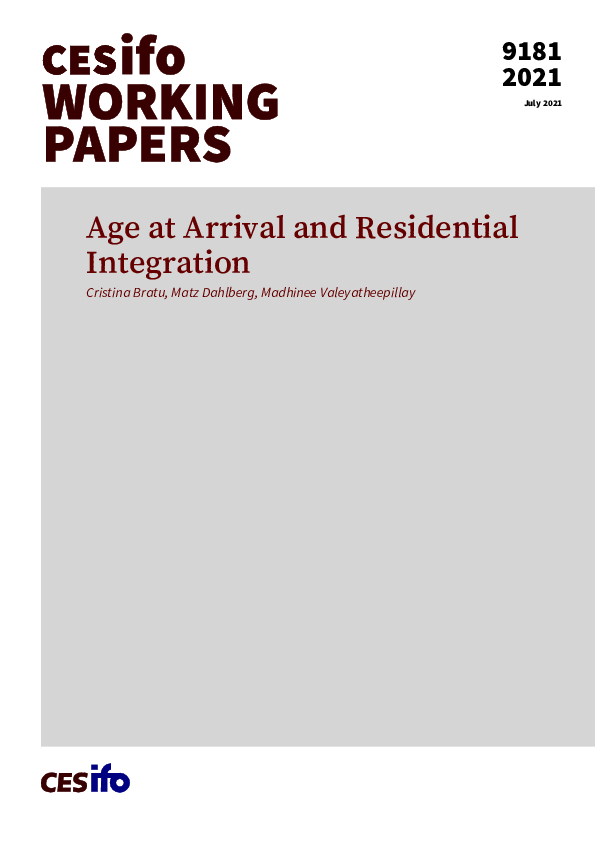Age at Arrival and Residential Integration
CESifo, Munich, 2021
CESifo Working Paper No. 9181

We study residential integration patterns in adulthood for children of refugees who arrive in Sweden before the age of 16. Using geo-coded information on the residential location of each individual in Sweden, we take a novel, data-driven approach in defining neighborhoods and construct individualized k-nearest neighborhoods, for k = 100 or k = 1000. Exploiting a siblings design, we find that, at age 30, refugee children arriving later live in neighborhoods with lower shares of natives, high-educated individuals, and high-income earners, and higher share of welfare receivers, regardless of the level of k. We also provide evidence that refugee children arriving later experience worse labor market outcomes in terms of earnings, lower educational outcomes and likelihood to marry Swedish-born partners at age 30 as compared to children arriving earlier to the host country. Using a decomposition analysis, we show that the mean effects of age at arrival on neighborhood integration are only partly explained by economic integration, educational integration and intermarriage. Our findings indicate that a large part of the estimated mean age at arrival effects remains unaccounted for, particularly for k = 100, which suggests a role for Swedish housing policies, housing discrimination and taste-based preferences in fully explaining the effects of age at arrival.